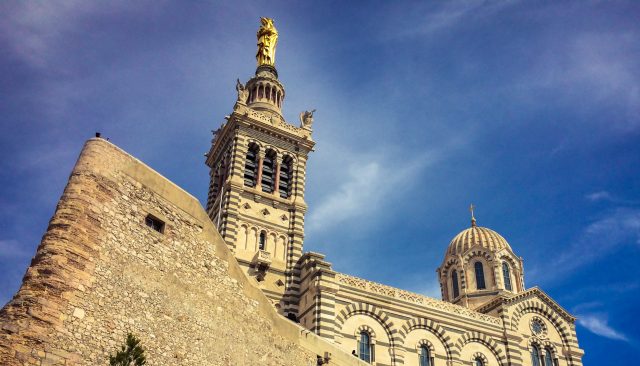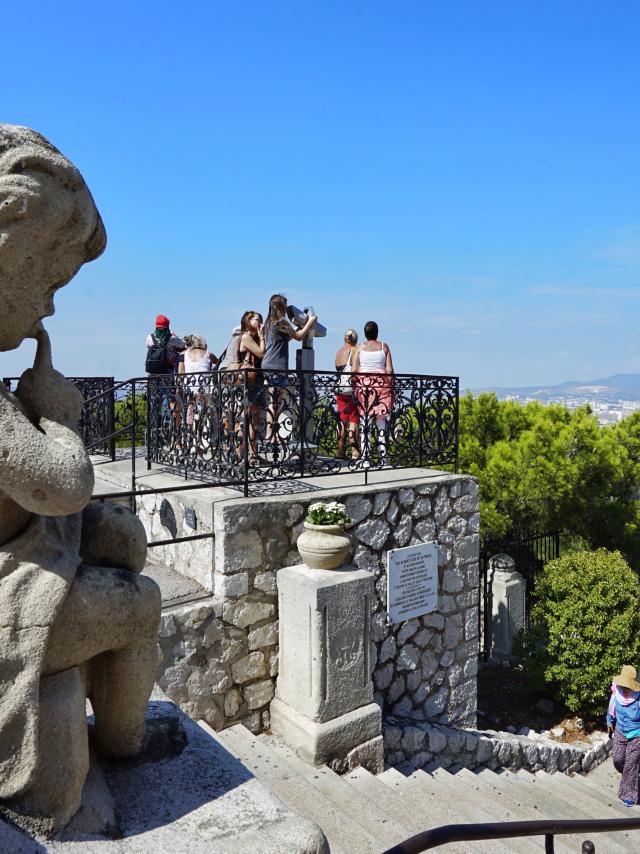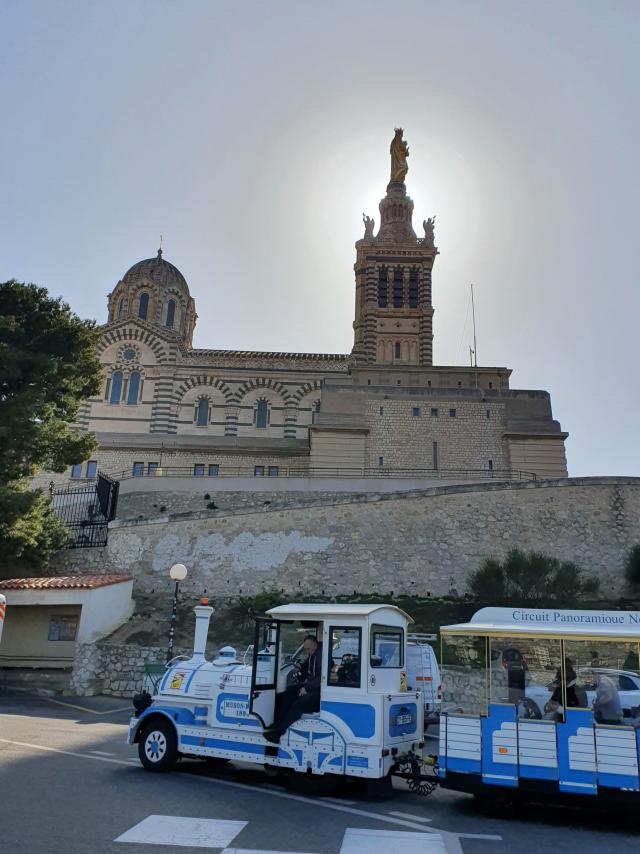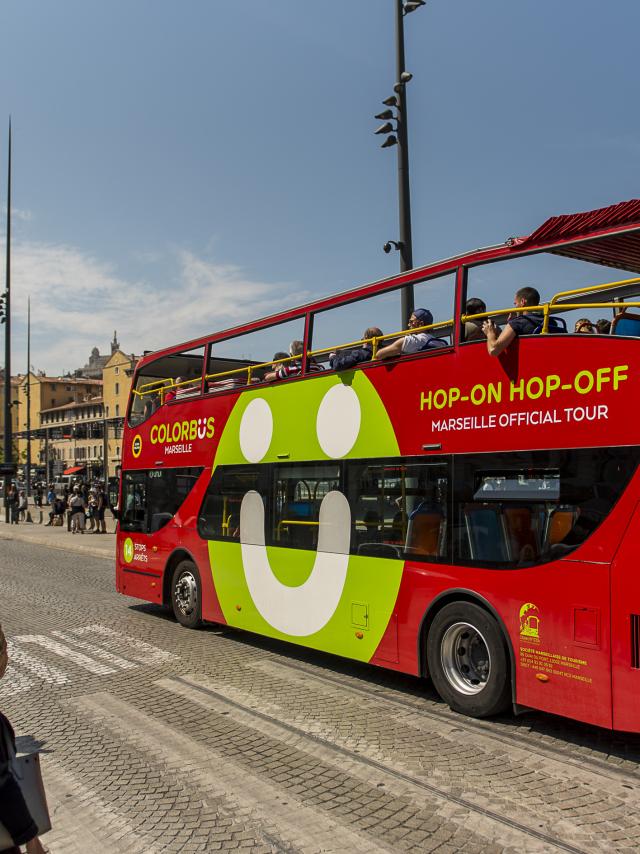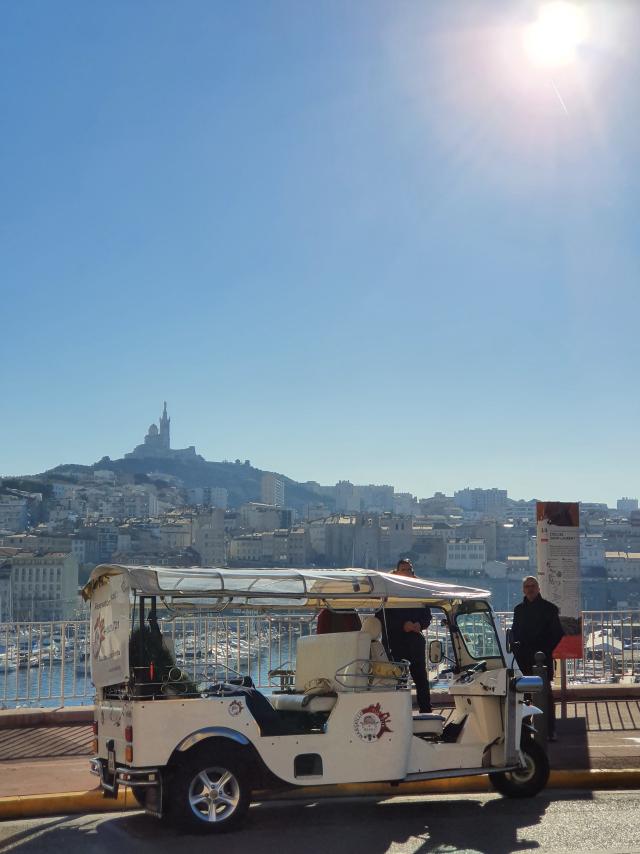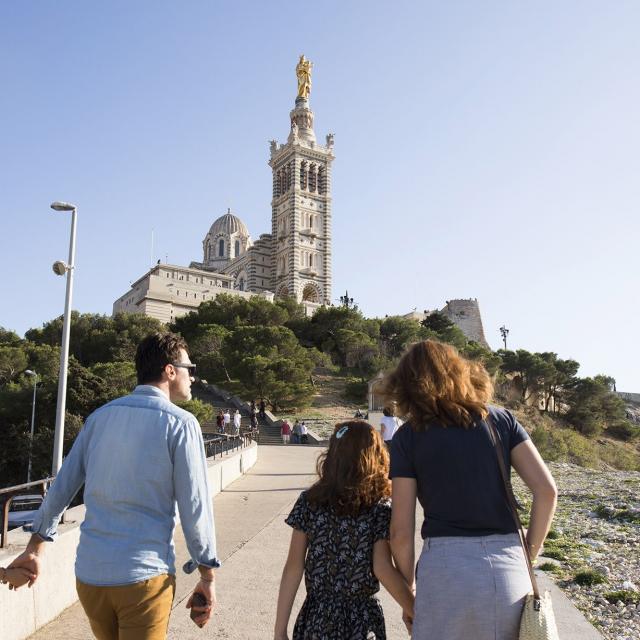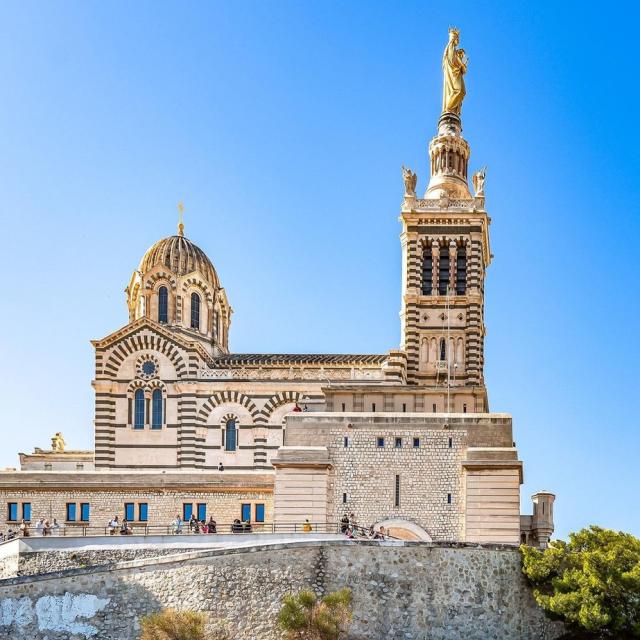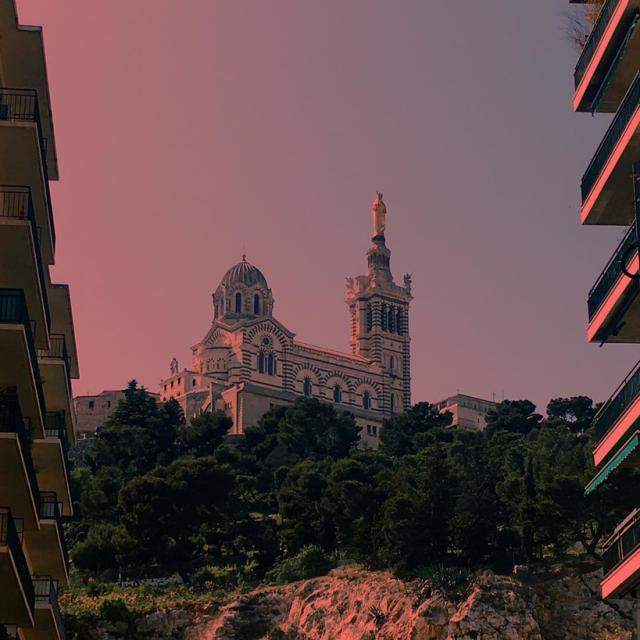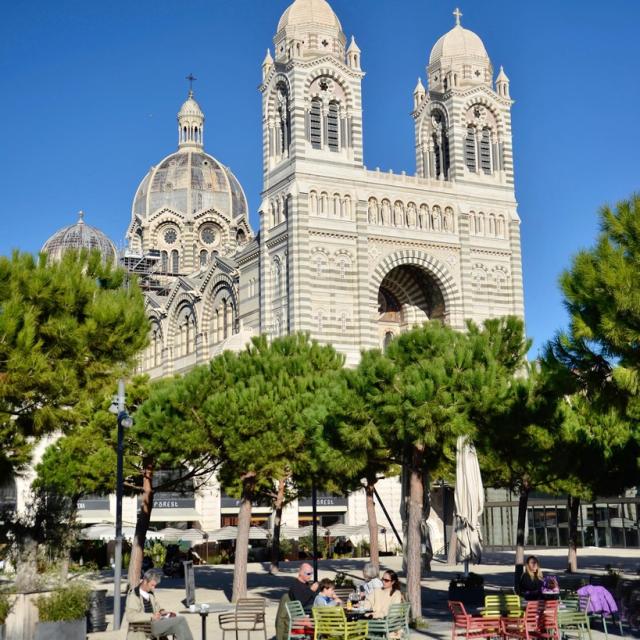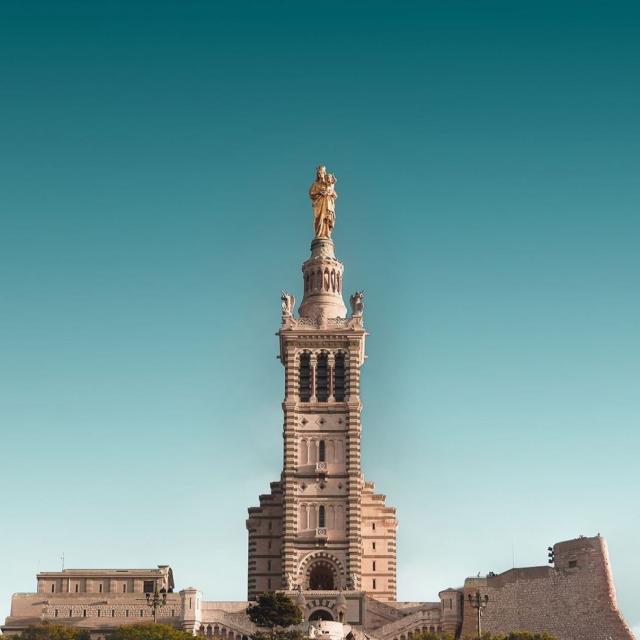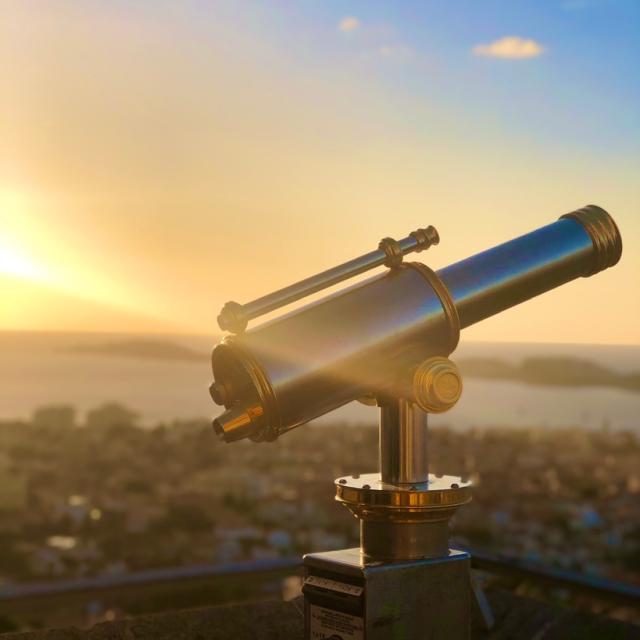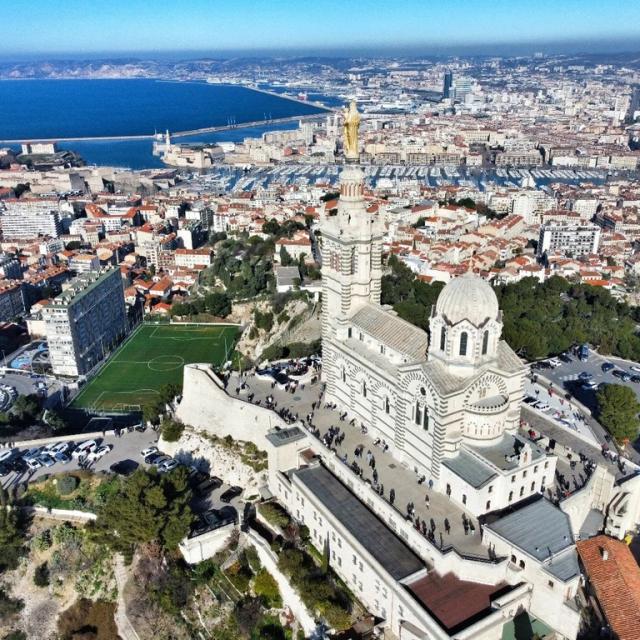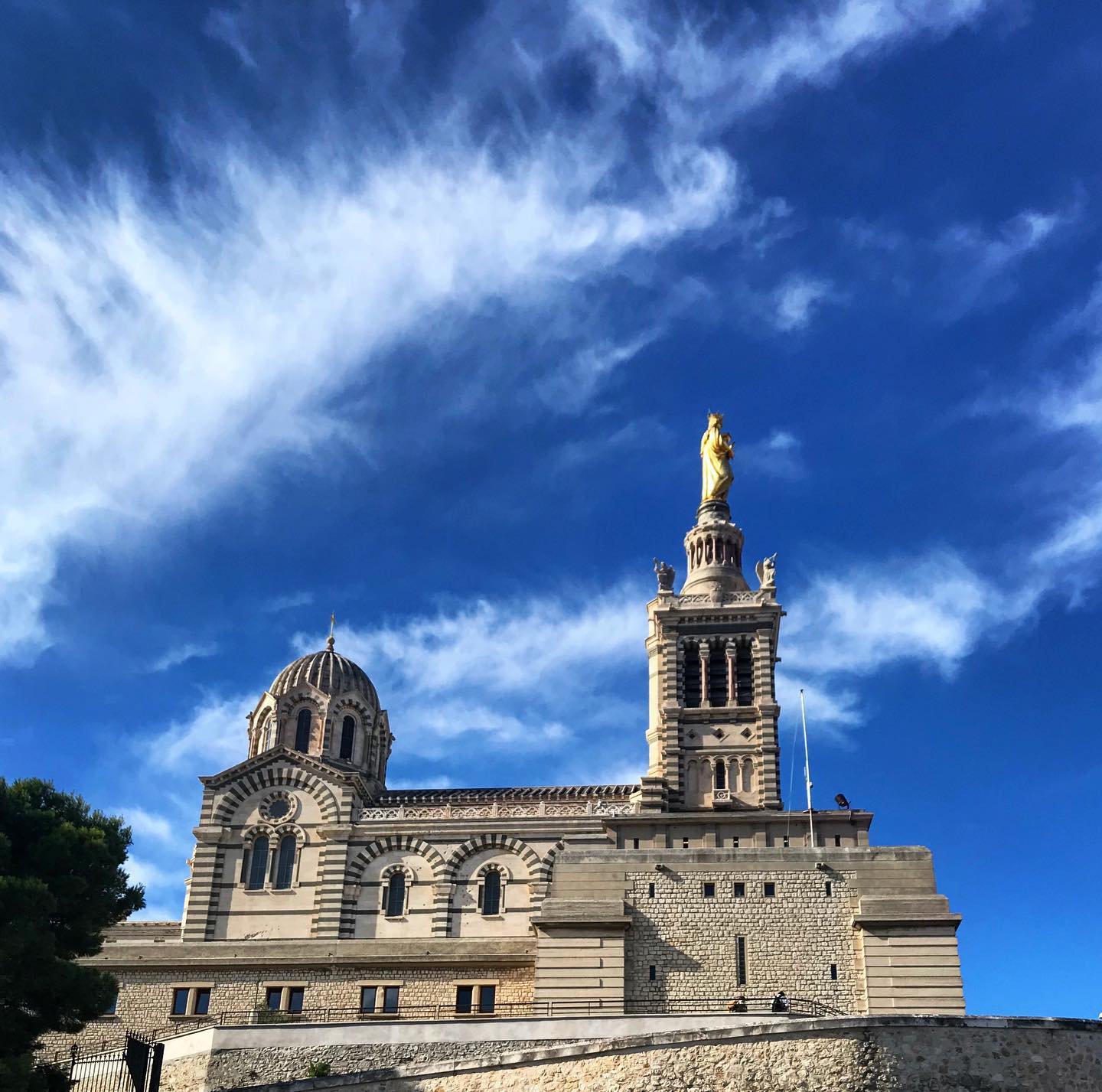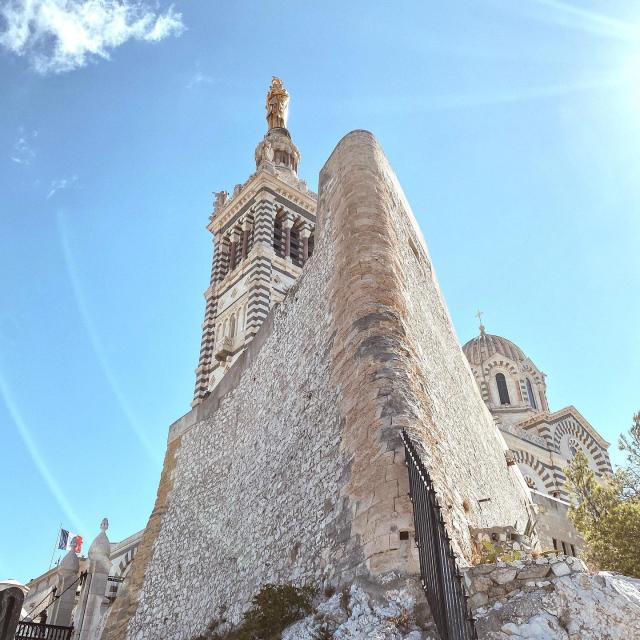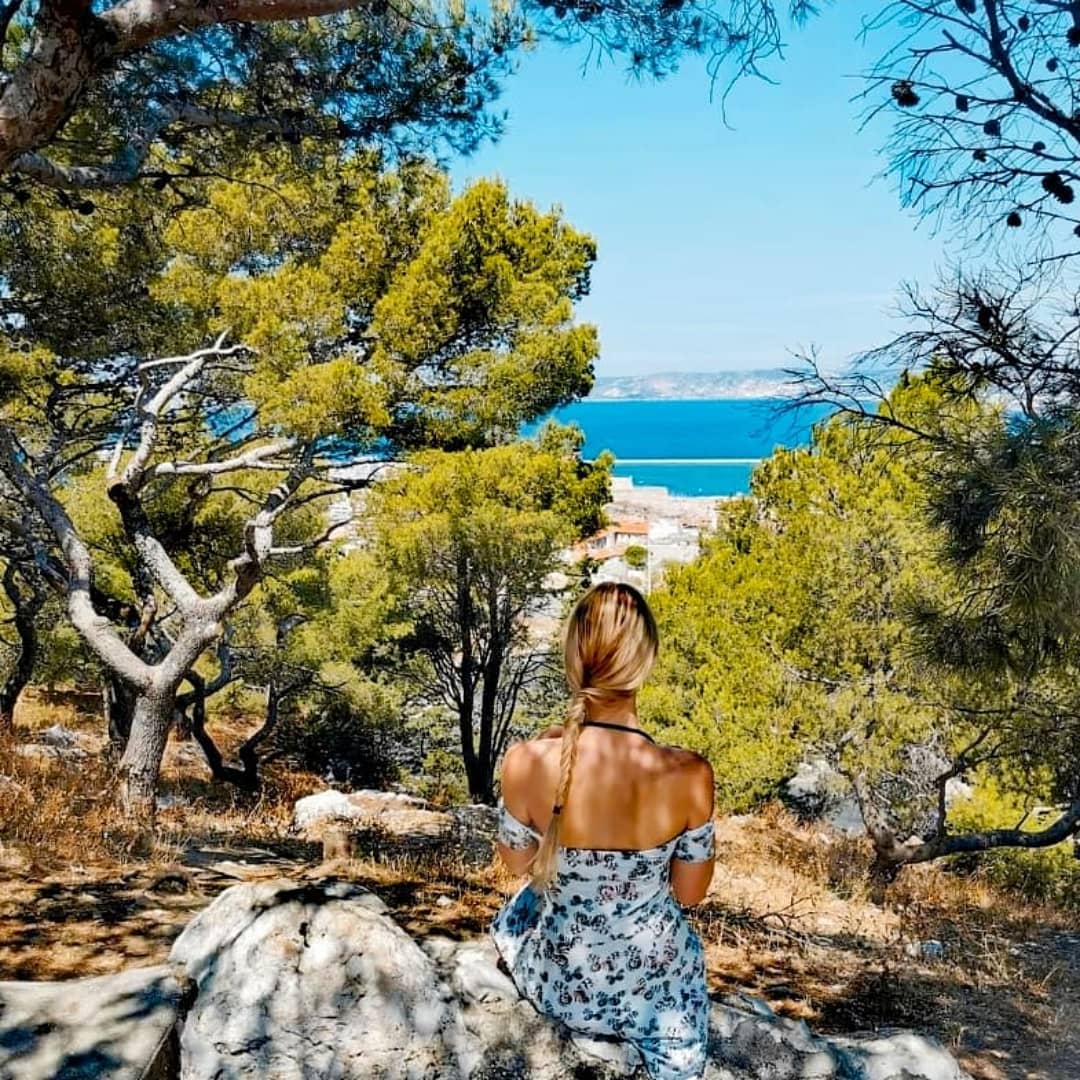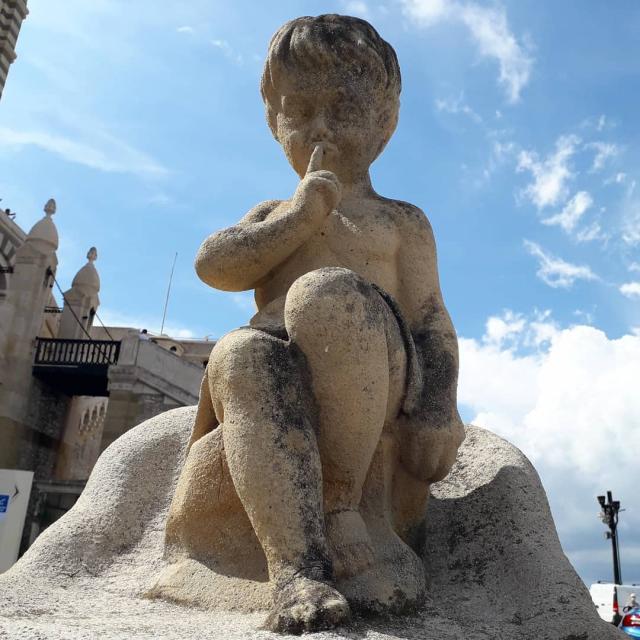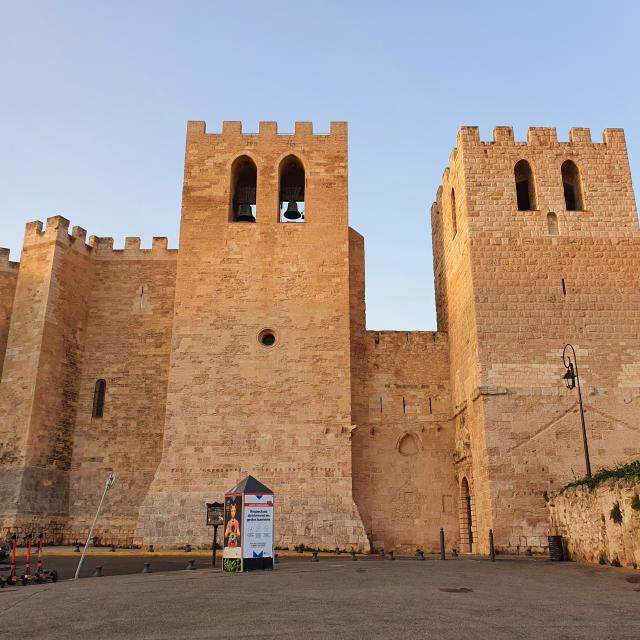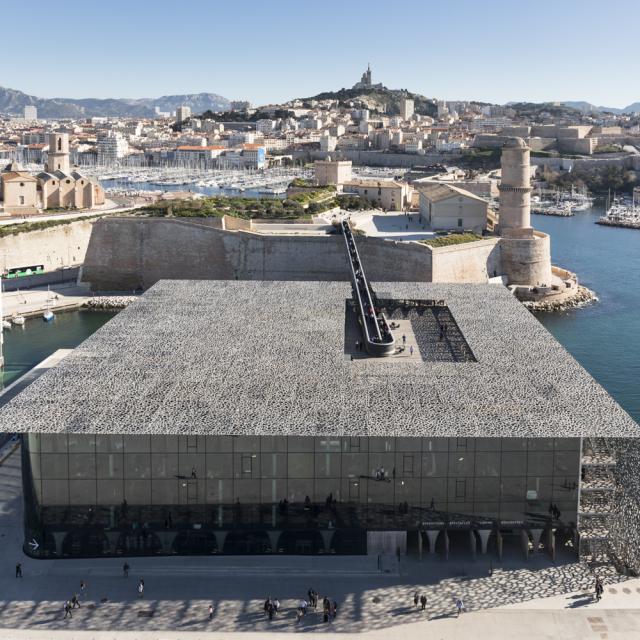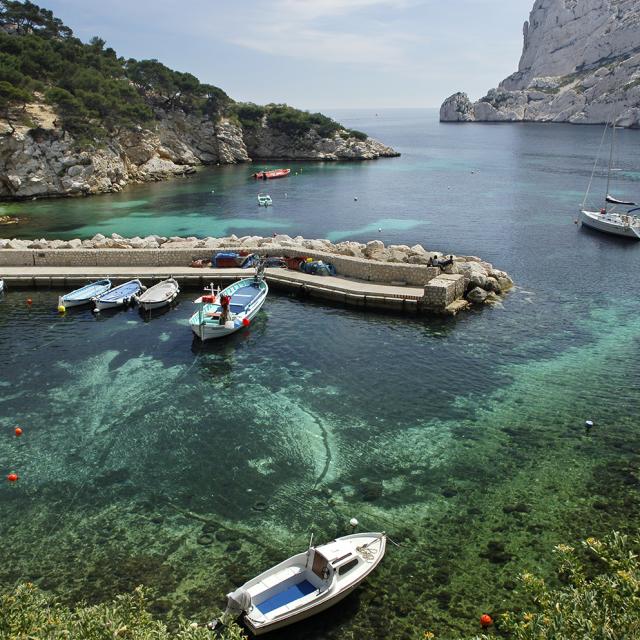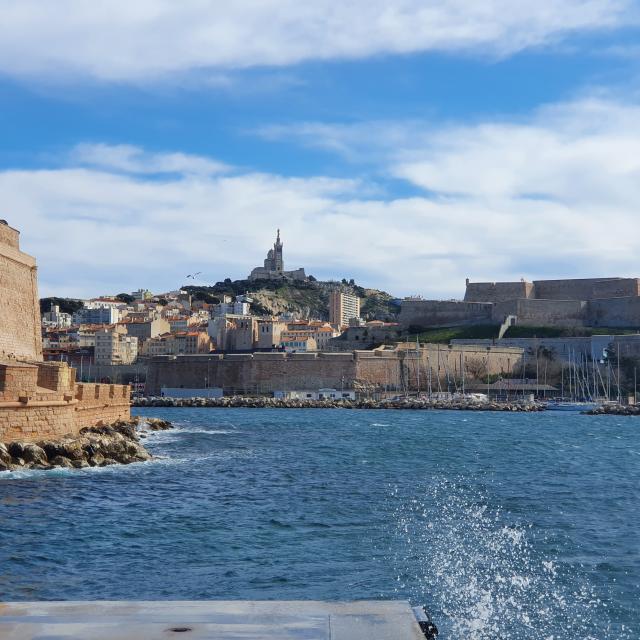History of the hill of “Garde”
The hill of “Garde” (154 m) has always been an observation point. At its highest point at 154 meters, it offers a 360 degrees view of the city, the islands, and the sea. In the 15th century, a ruling from Charles II of Naples included it in the way station list. This lookout system improved with centuries and the hill kept a monitoring role until 1978.
Francis I of France ordered the building of a fort in 1524 to protect Marseille from the armies of Charles V led by the Constable of Bourbon, and together with the ‘Château d’If’ (If Castle), they constituted a maritime defense which was lacking in the city. Nowadays, the remains of the fort which were used as the basis for the actual basilica can still be seen, and we can guess the King’s emblem above the northern entrance porch: the salamander.
1853, the first stone was laid
In 1214, a priest named Pierre built a small chapel and a sanctuary dedicated to the Virgin Mary on-site and established the religious calling of the location. Many chapels succeeded one another in the Middle Ages and during the Renaissance until the actual basilica was built. The hill of the ‘Garde’ had three purposes: a look-out post, a military building, and a place of worship and pilgrimage.
In the middle of the 19th century, the sanctuary turned out to be too small for the many pilgrims visiting. Monseigneur de Mazenod decided to build a big basilica called Notre-Dame de la Garde. The first stone was laid on the 11th of September 1853. The architect Henry Espérandieu was entrusted with the work and the consecration was celebrated on the 5th of June 1864. The basilica is made up of 3 bells, including an 8-tonne bourdon named “Marie-Joséphine”.
The city took a different turn during this time and launched the construction of prestigious monuments such as the ‘Palais de la Bourse’ (Chamber of Commerce and Industry) and the Préfecture (administrative center).
If you’re a history lover, you can visit the musuem of Notre-Dame de la Garde, located within the basilica. You’ll discover the entire history of the hill of La Garde, the basilica and even the city of Marseille. With its two permanent exhibitions spread over two floors, immerse yourself in the 2,000 documents, photos and objects, some of which date back to the early days of the basilica.
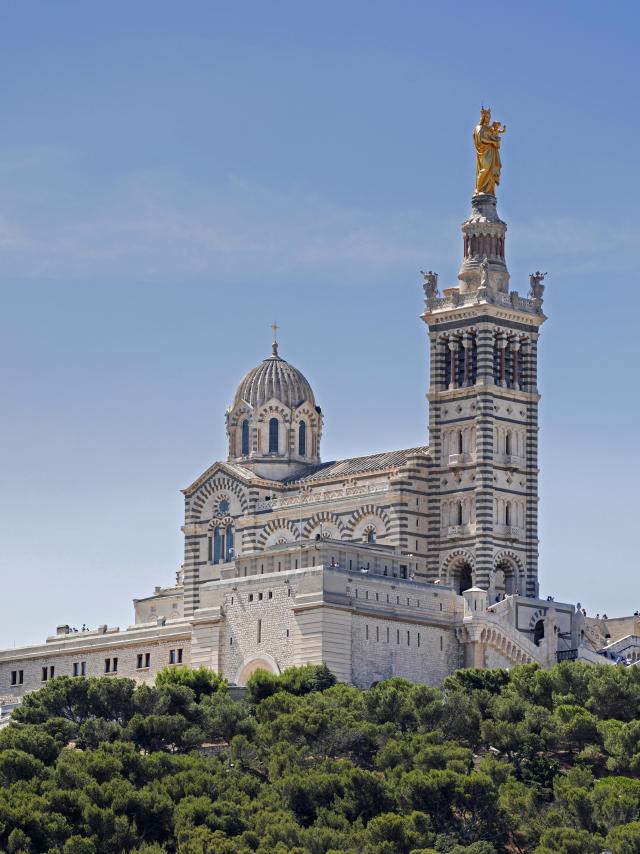
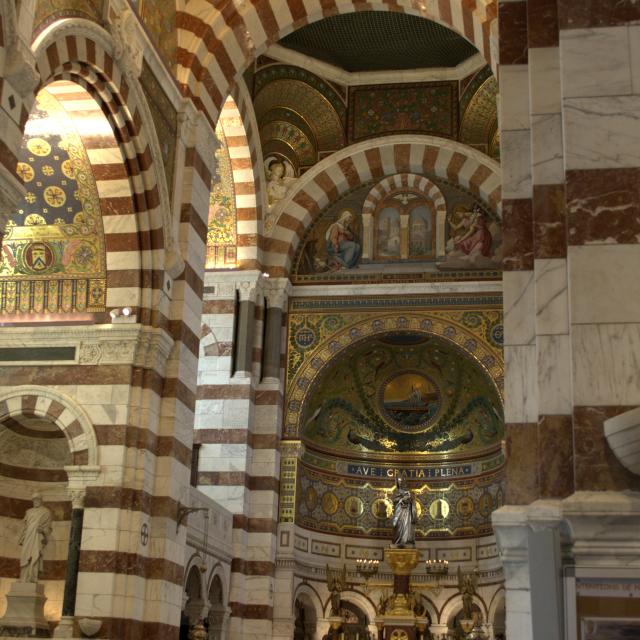
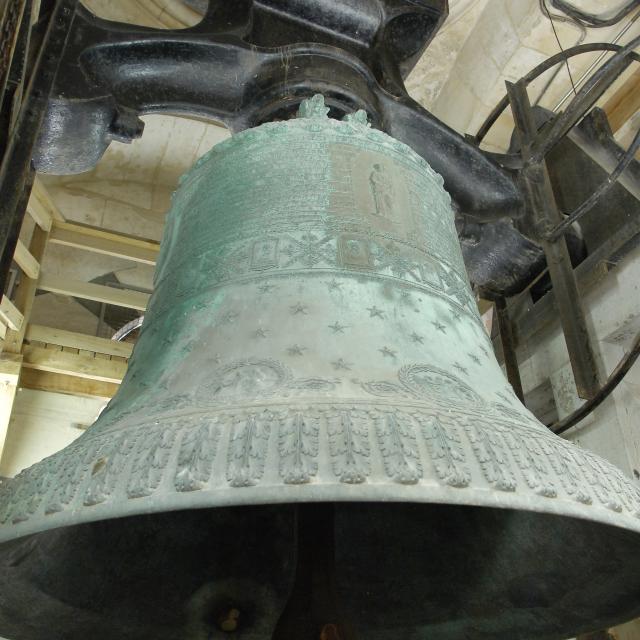
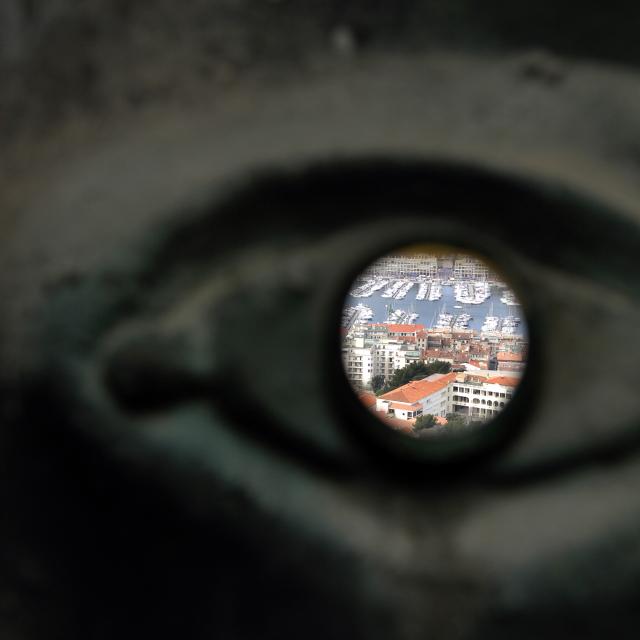
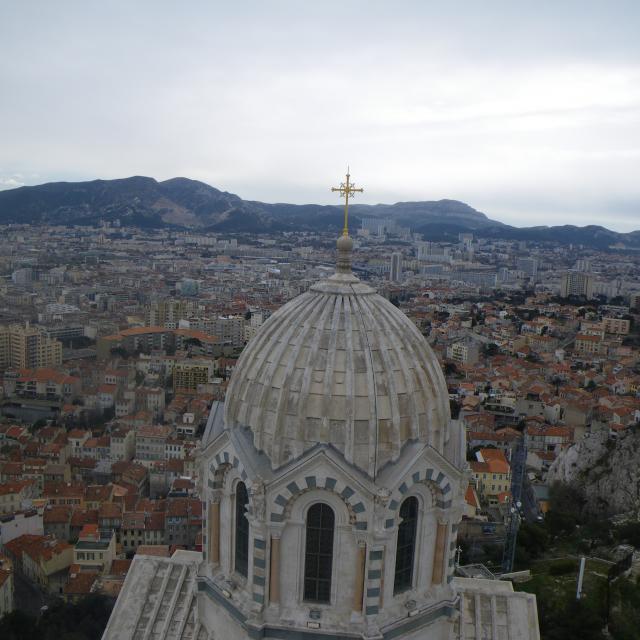
The ‘Bonne Mère’ (Good Mother) and popular beliefs
The familiar shape of the basilica can be recognised by the people of Marseille from many locations in the city, from the ‘Vieux-Port’ to the islands of Frioul, from the Mucem museum to the tower of the fort Saint Jean to the hills of Pagnol, the famous local writer.
The basilica was built based on a Roman-Byzantine style (with domes, stones polychromy, golds, mosaics) according to the Big Constructions Plan in Marseille undertaken under Napoléon III. The building is made of two parts:
- A lower church with an arched vault
- A higher church, the sanctuary, consecrated to the Virgin Mary (celebrated with a Pilgrimmage on the 15 August)
Inside the building, the many ex-votos exposed on the walls are a testimony to popular beliefs, reaching far beyond the limits of the Phocaean city. People were coming from the whole of the ‘Bouches-du-Rhône’ and Provence to light up an altar candle and ask a favour, or simply to be revitalised by coming a little closer to Heaven.
